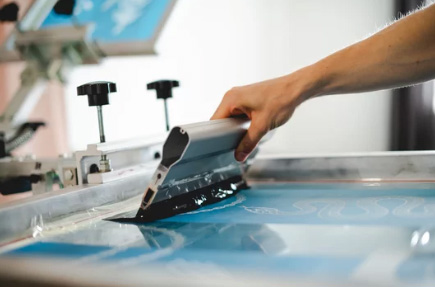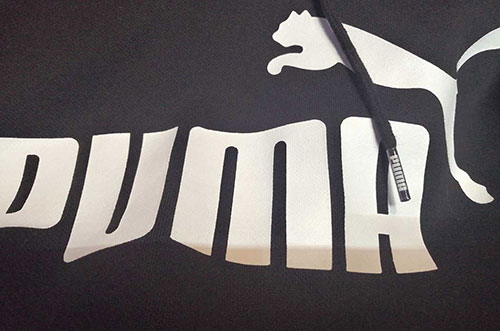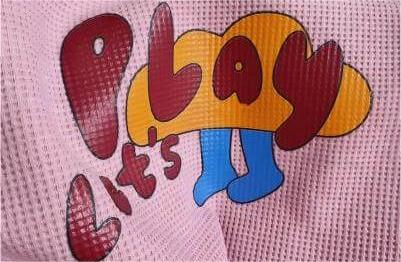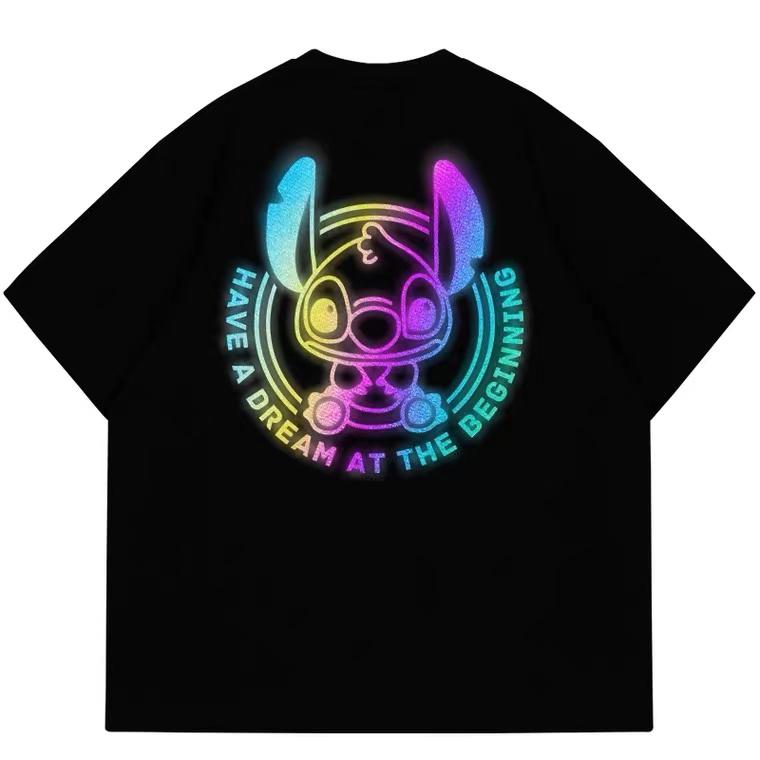Screen printing and heat transfer printing are two common ways to print patterns on clothes. There are some differences. Let’s take a look.
What is heat press transfer?
Heat press transfer, also known as thermal transfer, uses high temperatures (140 ℃ to 180 ℃) and high pressure to stick the pattern on the heat transfer paper or vinyl to the surface of the object. If you use heat transfer paper, you need to use a printer to put the pattern on the paper with ink first. If you choose heat transfer vinyl, the cutting machine should be used to cut the designed pattern on the vinyl.
Both ways are not expensive. But if your patterns are more complex and colorful, heat transfer paper is more suitable. Because cutting vinyl is time-consuming, and it is limited to one color per design layer.
What is screen printing?
Screen printing is the process of using a squeegee to push the ink through the screen holes and squeeze it onto the object. The main tools are a squeegee, ink, and screens. The number of screens depends on the number of colors. It is suitable for patterns with a simple design and is not rich in color.
We have helped lots of clients customize patterns on T-shirts and hoodies with heat transfer and screen printing. These two kinds of printing methods have their own advantages. I compare them using our custom projects as live examples.
Heat transfer vs screen printing: color and printing quality
The patterns of heat transfer and screen printing are both attached to the surface of the clothes. The patterns of screen printing have a glue-like feeling. And heat transfer printed patterns touch like a layer of leather stuck on clothes.
Complex and colorful patterns can be printed on clothes by heat transfer press, such as portraits, landscape paintings, gradient patterns, etc. Using different transfer papers, we can make patterns on the fabric glittery, reflective, luminous, diamond, etc.
Screen printing is good for simple designs and few colors, and is unable to print gradient colors. In addition, the printing effect will be affected by ink viscosity, extrusion pressure, placement position and other factors.
The patterns printed by heat transfer are not as durable as those by screen printing. The pattern lasts longer by screen printing because ink soaks into the fabric, and can endure roughness from any washing machine. Patterns printed by heat transfer are attached to the fabrics, and will eventually crack and fade over time.
- pattern printed by heat transfer
Cost of heat transfer vs screen printing
Heat transfer is more cost-efficient for small orders. So it is very suitable for print-on-demand in the market. The cost of heat transfer printing is calculated according to the size of the pattern and the number of orders.
We help our client to print a 5×5cm² pattern on his 200 T-shirts. It is about $0.6/pcs. You can use this case as a reference.
Screen printing is cost-efficient for bulk orders, such as 500 units. Screen printing cost consists of the following two parts.
- Plate-making fee usually charges from $15 to $70. It varies from the material of the printed object, the size of the printed pattern, and the number of colors.
- The printing labor cost will also be affected by the material of the objects. It is about $0.3/pcs on clothes, and lower on other hard objects such as ceramics.
We help our client to print a 5×5cm² logo with two colors on his 1,000 shirts by screen printing, and the plate-making charge is $50/plate. Total cost = $50 * 2 + $0.3 * 1,000 = $400. The price is $0.4 per shirt.
Heat transfer vs screen printing: production time and eco-friendly
Production time
Heat transfer printing is suitable for some small orders and rush orders, because it does not repeat the steps of color registration. It’s fast and easy.
For screen printing, each color requires separate plate making, which will affect the speed of production. But once the screens are ready, the production will be fast. Some screen printing machines can print 1,080 pieces per hour. While it takes 2 to 3 minutes to complete the pattern printing on one piece with heat transfer.
Environmentally friendly
Heat transfer printing does not waste materials or need any water to clean. Screen printing not only uses polluting inks, but also requires large amounts of water and detergents to remove additives. Besides, rags, used films, and other used materials have to be discarded, all of which have an impact on the environment.
Conclusion
If your order is more than 500 with simple patterns and fewer colors, screen printing is more cost-effective. For your small order with complicated patterns and colors, heat transfer printing is a good way. While, if you want your patterns or logos to be more delicate, you need to find other solutions than printing.
Contact Jingsourcing for Printing Solutions
- 200+ printing factories
- Support 4000+ clients
- 20+ years experience







This article provides a comprehensive and insightful comparison between heat transfer printing and screen printing. As someone interested in heat transfer printing, I appreciate the detailed breakdown of the pros and cons of each method. The information on cost, durability, and customization options is particularly helpful for making an informed decision. It’s great to have such a resource that delves deep into the nuances of both techniques. Looking forward to more content on heat transfer printing